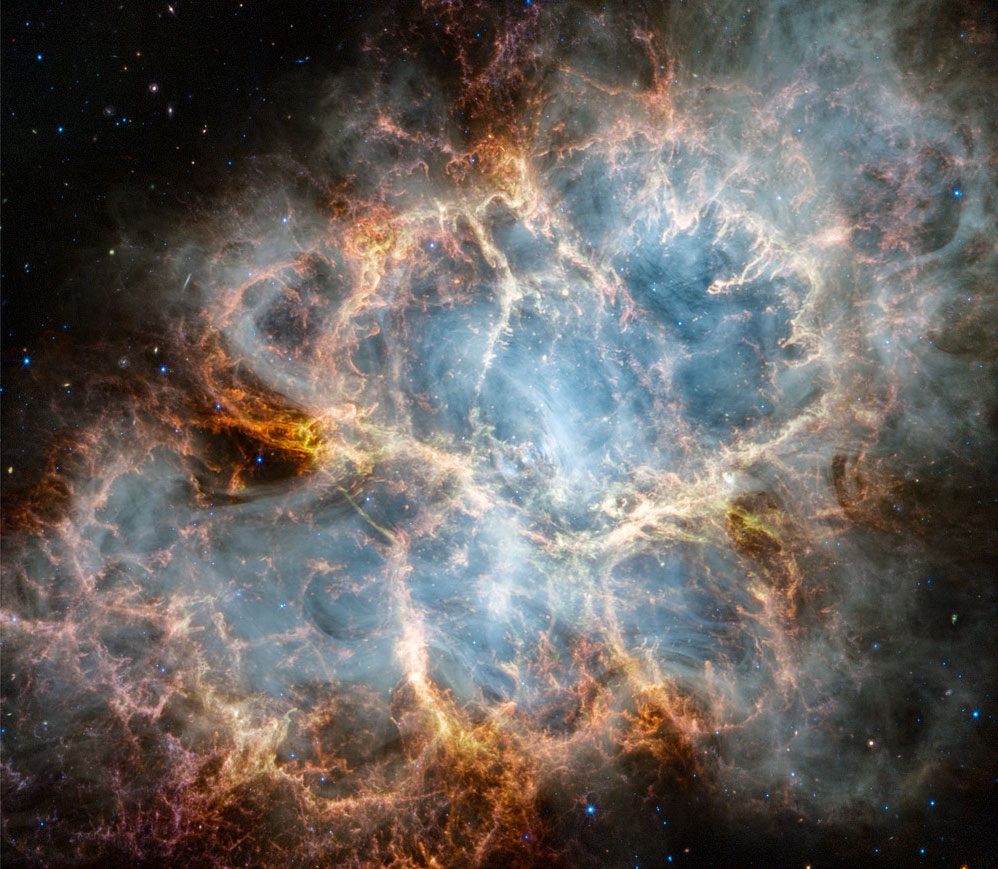M77: 具有活跃核心的螺旋星系
A big beautiful sprawling spiral galaxy is shown. The galaxy has well defined spiral arms with bright blue star clusters and dark red dust. The center is a bright white. Please see the explanation for more detailed information.
图中展示了一个巨大而美丽的螺旋星系。该星系拥有清晰的旋臂,旋臂上分布着明亮的蓝色星团和暗红色的尘埃。星系中心呈明亮的白色。有关更多详细信息,请参阅说明。










